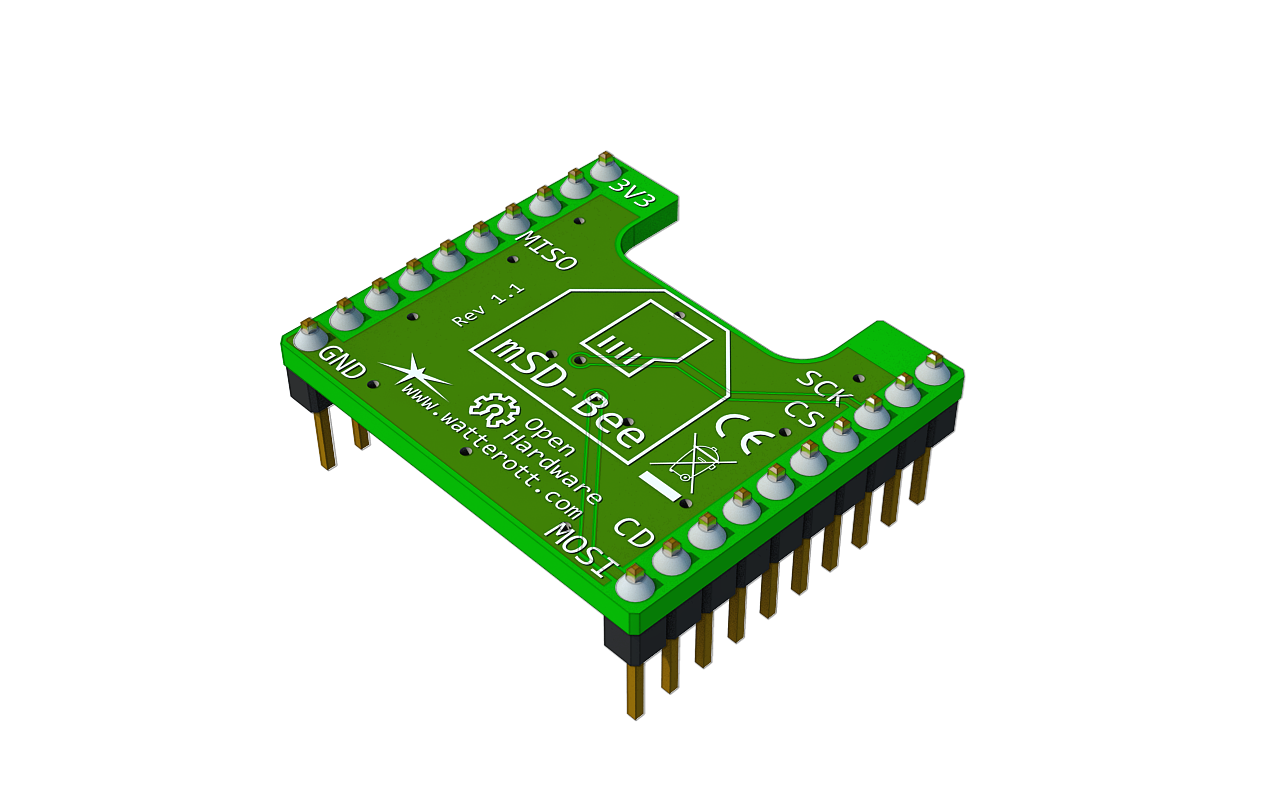SD-Bee
With the microSD-Bee, the data of the senseBox can be stored on an SD card.

SD Bee
Technical Information
- "Plug-in-and-Go" senseBox compatible
- Port for miniSD card
- Designation: mSD-Bee
- Dimensions: 24mm x 21mm x 9mm
- Weight: 2.4 g
Make sure that the mSD-Bee is connected to the XBEE2 connector of the senseBox-MCU, otherwise there may be problems saving your measurement data.
Programming (Arduino)
In the following example, we show you how the string Hello World! is saved on the SD card in a file named senseBox.txt.
// Include the libraries
#include <SPI.h>
#include <SD.h>
File myFile;
// Name of the file on the SD card
// Make sure that this name (without file extension) is not longer than 8 characters!
String fileName = "senseBox.txt";
void setup()
{
// Starting the SD-Bee
SD.begin(28);
// Open the file on the SD card
myFile = SD.open(fileName, FILE_WRITE);
myFile.close();
hdc.begin();
};
void loop()
{
// Open file with write access
myFile = SD.open(fileName, FILE_WRITE);
myFile.println("Hallo Welt!");
// After use, the file is closed again
myFile.close();
};
Programming (Blockly)
The Create file on SD card block can be used in the setup() to create a new file on the SD card.
The name of the file can be changed in the dropdown menu of the block.
With the Open file on SD card block, the previously created file can be opened in the endless loop.
In the free block section of the Open file on SD card block, the Write data to SD card block can then be placed.
In this, the text or number to be written can be placed in the free block section.
In addition, by checking the box at Line break, it can be determined whether a line break should be inserted after each measured value or not.
Additionally, we get the block for an interval from the Time category and the desired sensor from the Sensors category.

